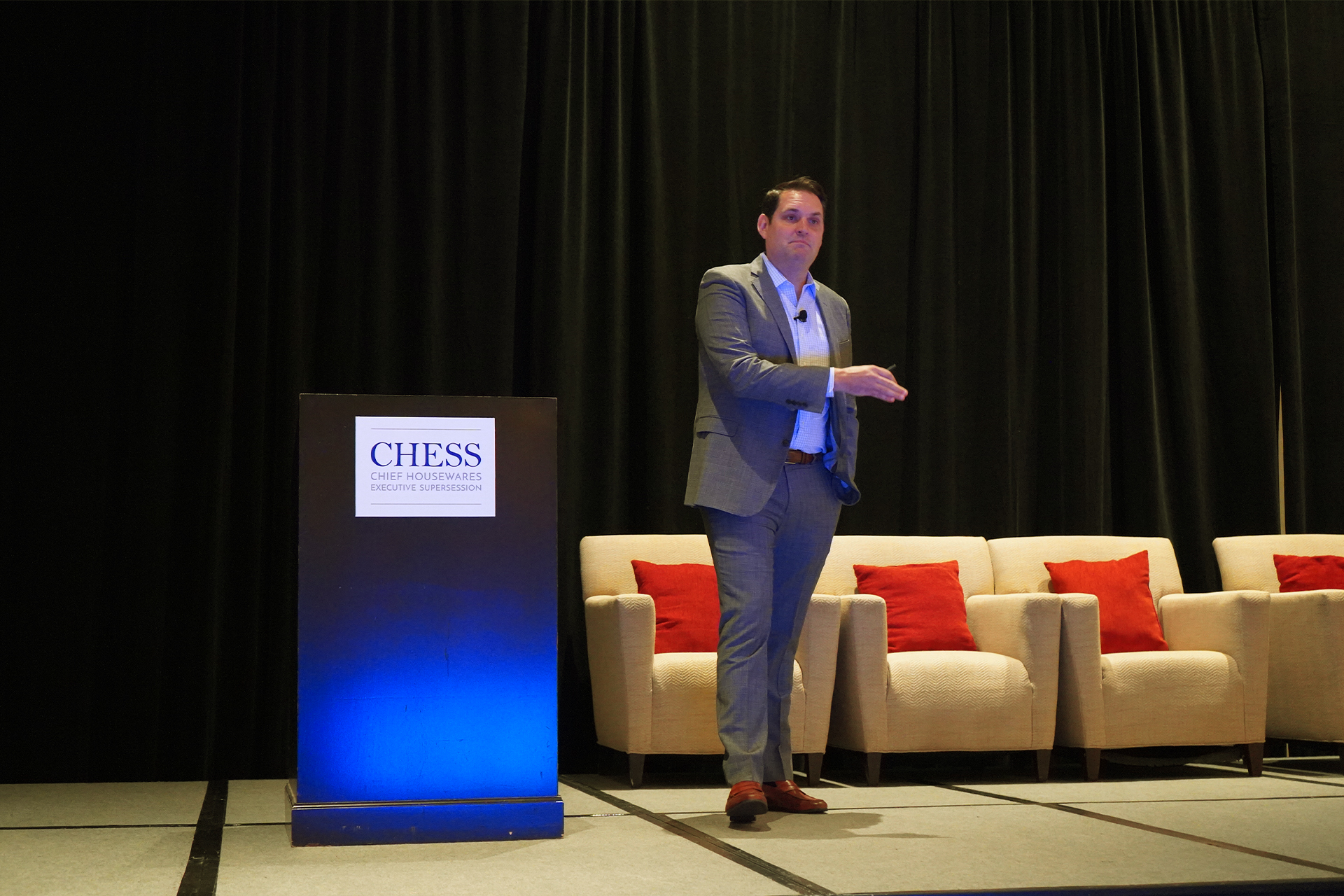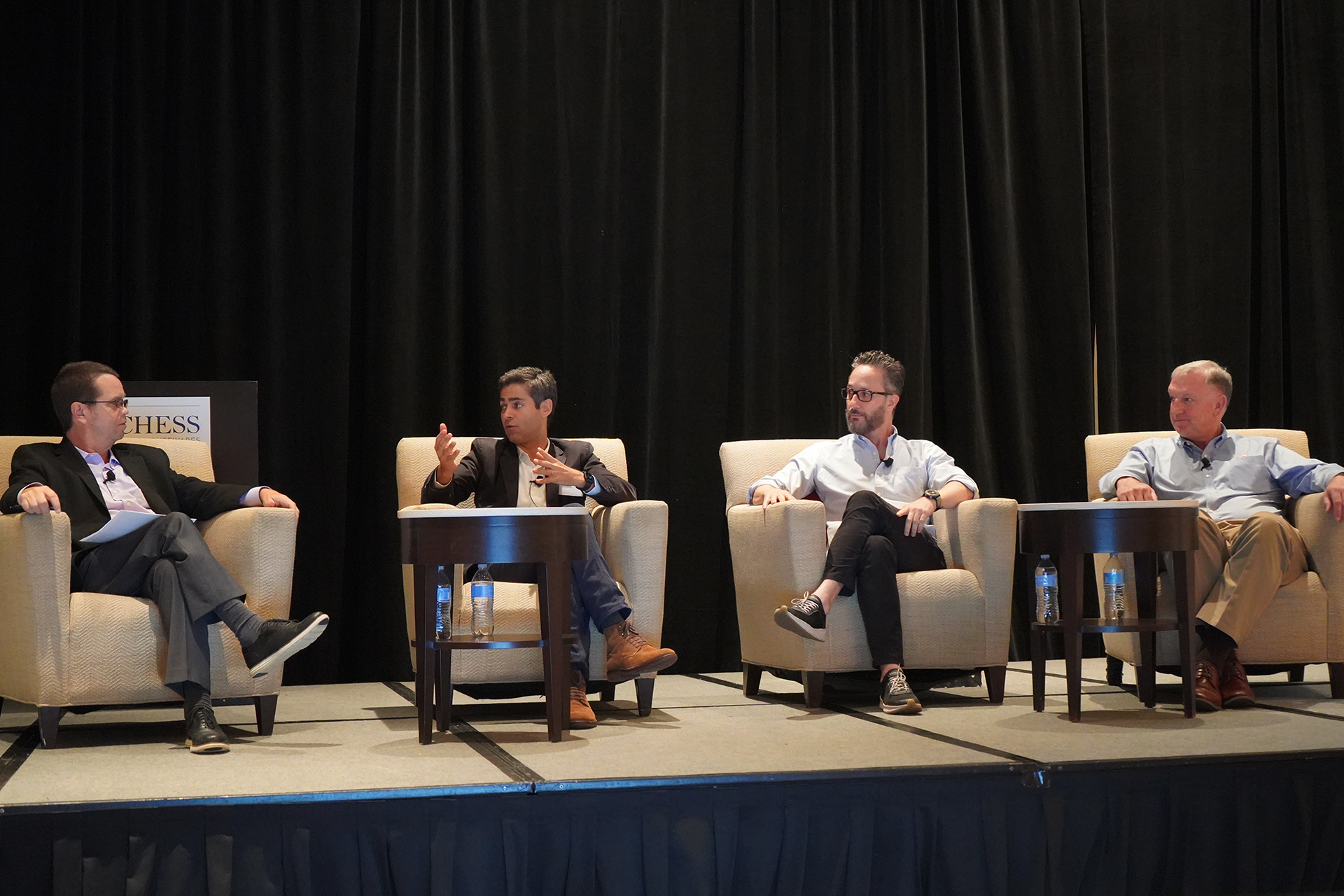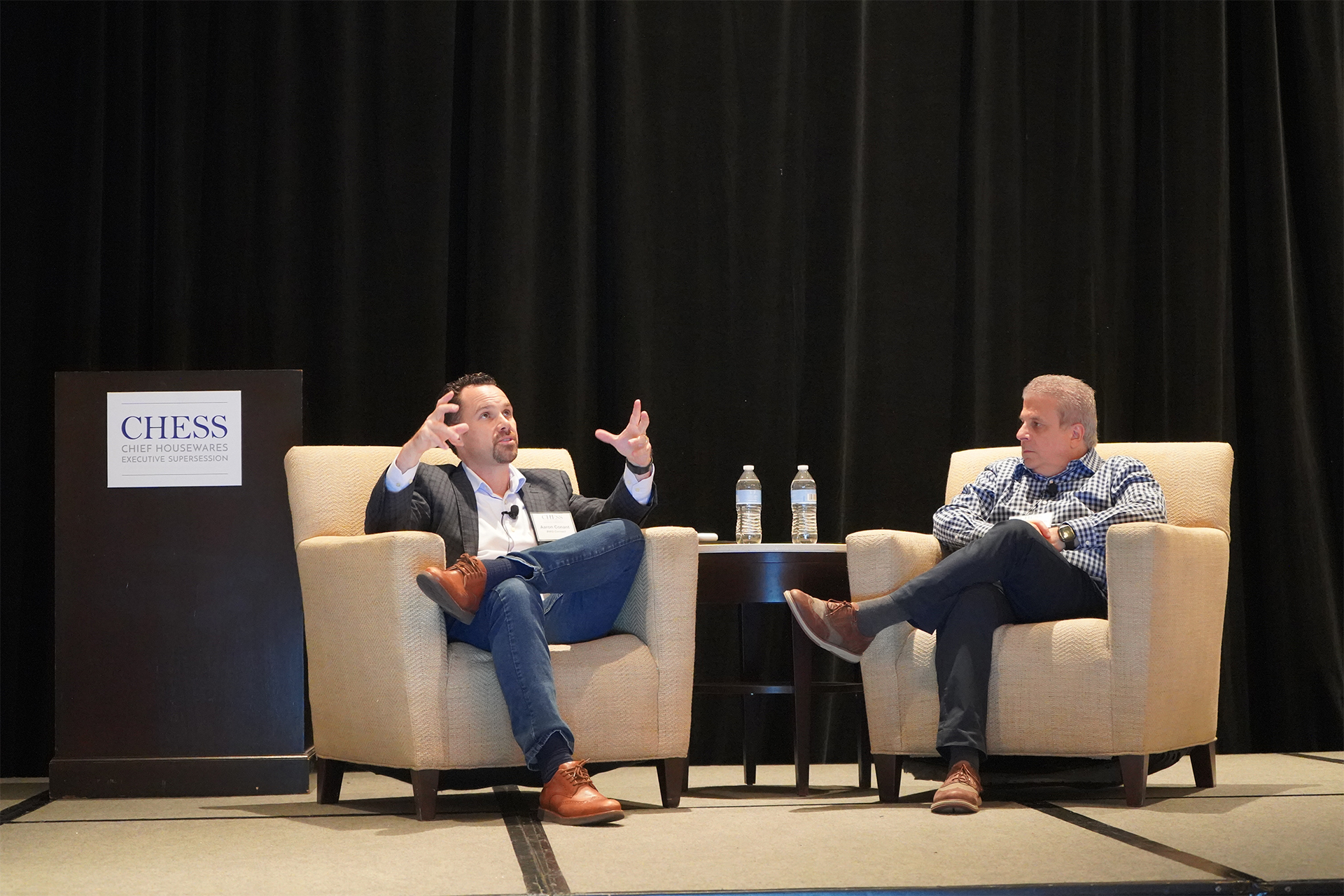The International Housewares Association’s 2022 CHESS (Chief Housewares Executive SuperSession) wrapped up Friday with expert insights on the resurgence of physical retailing; housewares marketing hot spots for post-COVID consumer lifestyles; global growth opportunities for housewares companies; and a look into the future of marketing brands in the Metaverse.
Here is a recap of the day-two sessions at CHESS:
Using Foot Traffic Data To Assess Competition, Premiumization and Changes in Consumer Behavior Across the Housewares Retail Category

Brick-and-mortar retail is not dead according to foot traffic analytics, said R.J. Hottovy, head of analytical research at Placer.ai. The company observes customers at retail locations in a given area, aggregates the data for general insights into the venue and then extrapolates a range of metrics that provide the retailer with visibility into their customers’ behavior.
Placer.ai has 30 million active devices that record 1.5 billion monthly retail visits across the US. After analyzing the data, the company provides retail clients with detailed reports on critical insights including visitation trends, trade area analysis and customer demographics.
While retail visitation trends have been volatile the past several months, summer 2021 peaked 10% above pre-pandemic foot traffic reinforcing the importance of physical retail.
In year-over-year analysis, service-oriented retailers are seeing higher traffic, he said. The fitness category continues to outperform other categories because people are returning to gyms for workouts after staying home during the pandemic. Car washes and quick-service restaurants also are doing well compared to other service retail categories.
In the non-discretionary retail sector, dollar stores and value-oriented grocery stores lead the way. Other retailers, including department stores, sporting goods, home furnishings, home improvement and consumer electrics, are down year over year. Home furnishings are lagging behind home improvement in visitation but are starting to gain ground. Home furnishings retail visits began trending downward in 2019 but Hottovy attributed its continued down performance in 2022 to changes in consumer behavior—increased comfort in purchasing from online retailers, inflation due to supply chain issues and higher interest rates.
Hottovy offered some lessons for home furnishings retail:
- Demographics matter — Retailers who specialize in high-income or low-income consumers have generally outperformed those in the middle. At Home has done better with lower-income consumers while HomeGoods leads with higher-income consumers.
- Execution may be more important — There is a positive correlation between household income and home furnishing visits, but inventory, advertising and site selection are key.
- Site selection calculus has changed amid COVID migration — Migration and corresponding housing occupancy rates have altered the variables behind the traditional site selection process. Southern markets such as Arizona, Florida and Texas have seen population growth due to migration, as have many smaller markets, populations under 500,000 and university cities.
- Bigger isn’t necessarily better — Home furnishing retailer Arhaus has a traditional showroom of 17,000 sq. ft. and a 4,000 sq. ft. design studio and is seeing twice the volume at the design studio.
Post-COVID Playbook for Retail and the Home Industry

As we shift into a post-COVID world, there are many variables, changes in consumer behavior and spending and innovation at retail that are creating both challenges and opportunities for the home + housewares industry.
During this session, Marshal Cohen, chief retail advisor, The NPD Group, and Joe Derochowski, home industry advisor, The NPD Group, discussed the retail and home industry through five “stories” including retail trends, pricing, promotion, landscape and cost of living.
Retail inventories accelerated in 2022, with retail inventories growing 21% over 2021 and 30% over pre-pandemic 2019 to reach the highest point in decades. The home industry is below 2021 but remains above 2019 levels. Consumers are continuing to spend but are doing so with caution.
In pricing, retail prices are beginning to plateau. Through the second week of September, year-to-date prices grew 7% vs. last year and 21% vs. 2019. In the home industry, most segments are still holding price with the exception of home environment which has seen more of a decline in the past few weeks.
Discussing promotion, Cohen said the percent of units on promotion continued to trend upward through July, reaching a peak of 44% during the second week of July. As the holiday season begins, consumers will likely be shopping earlier, in October, throwing off the promotional period of Black Friday or Cyber Monday.
There have also been changes in the landscape. Channel changes have occurred in the case of the beauty industry, for example, with the opportunity to buy premium products at new places in the case of Ulta at Target and Sephora at Kohl’s. Prestige beauty is being offered in a mass market retailer which has prompted retailers to look into exclusives for separation of the consumer. E-commerce rates have picked up in July, partly due to Promotion Week, following the digital leveling-off that was experienced after the double-digit pandemic growth. Direct-to-consumer brands have experienced a higher monthly growth rate than POS retail throughout most of 2021 and 2022. Additionally, 55+ consumer retail spend has experienced the fastest year-over-year growth; 55+ consumer dollars grew 13% while all other ages combined grew 5%.
Lastly, cost of living has made an impact. The dollar and unit gap between income groups remains wide, consumer debt is at an all-time high and housing prices and mortgage payments are on the rise. However, job market numbers are flourishing for now.
Cohen and Derochowski stated that 2023 is likely to get better, but it is going to be a cautionary period in which it will be important to keep a finger on the pulse of what is going on. The consumer is looking for innovation in a product to engage them and get them excited about what little money they are willing to spend. “There is big opportunity out there,” said Cohen.
International Retailer Roundtable: Unlocking Global Housewares Growth

With the IBC Global Forum occurring simultaneously with CHESS, attendees had the opportunity to hear from three global retailers/distributors about their markets and how to do business with them. The panel included Andrews Mutschler, founder and CEO of Westwing, a Brazilian online retailer offering consumers a different experience with impeccably curated, in-stock products arranged in constantly updated rooms; Meir Mareyna, CEO of Tendencias y Conceptos, a family-owned distributor of more than 20 major global brands of home and housewares products to key housewares retailers throughout Mexico; and Duncan McGhie, vice president, international merchandising, imports and proprietary, ACE International.
Global issues such as inflation are affecting international retail to varying degrees. In Brazil, Mutschler said things are tough because the standard interest rate is 31.5%, lessening consumers’ purchasing power. At the same time, the e-tailer is under pressure to be more profitable. It is a “double crunch” trying to increase margins at a time when consumers aren’t spending much, especially in the home category, he said. In Mexico, the housewares market is affected less than other markets, Mareyna said. The exchange rate between the peso and dollar has been stable and strong, so even though most brands have had to increase prices, the increase hasn’t been much.
ACE, which has more than 5,500 stores in 70 countries is opening franchises in Mexico and will have 200 stores there in five years, McGhie said. In working with suppliers, they love innovation and are looking for products that have a point of difference for the market. McGhie said there is a pent-up demand for products.
Regarding the upcoming holiday season, Mutschler said consumers are expecting deals. Some retailers are starting holiday sales now because the World Cup, usually held in the summer, will be in November and consumers stay home to entertain and watch the games, potentially affecting retail traffic. Mareyna said in Mexico, Black Friday is the main event to buy for Christmas but is increasing in number of days and weeks from its third week of November timeframe.
Creating Value Using Web3, Mixed Reality and the Metaverse

In the session, “Creating Value Using Web3, Mixed Reality and the Metaverse,” David Lucatch, president and CEO, Liquid Avatar and Aaron Conant, co-founder and chief digital strategist, BWG Connect, discussed the opportunities that are rising with the onset of Web 3.0.
We’re only a few years away from the Metaverse and Web 3.0, said Lucatch, and it will be important to get in on the ground floor, creating this new virtual representation of your brand. The Metaverse is the next level of the internet: a website that has different interactivity. While there is no manufacturing in virtual products, companies can still connect to real-life events and grow brands and products.
When thinking about how to get started and approach Web 3.0, companies should begin by asking questions. “What would Web 3.0 mean to my business?” “How am I going to benefit from that?” It’s important to understand how Web 3.0 will interact with consumers and other businesses, said Lucatch.
As the Metaverse expands, it will be important to gain equity on the platform as unauthorized people can be creating your brand in the Metaverse. While the time to execute may be six months to a year away, it is important to start gathering assets and digitizing products to get them ready for implementation.
Having virtual products in the Metaverse could bring about a brand new channel of opportunity, for consumers in product discovery and for the company in testing new products and colors with zero manufacturing costs. Lucatch discussed the idea of promotional aspects as well. If someone buys a product in the real world, perhaps they get the virtual product for free. While virtual products cost less, with shipping, distribution and regulation at zero, the margins are high.
“Companies are joining at a feverish pace,” said Lucatch, “Your competitors are going to be there, people you’ve never met are going to be there. It’s like the Old West. You have to stake your claim.”





